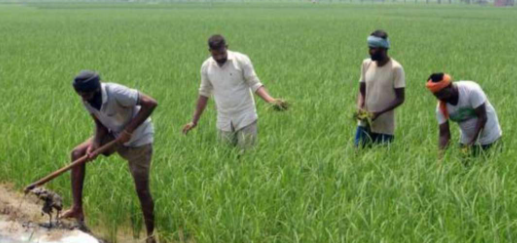Many of those familiar with the academic and political language of an earlier age may find one feature of the ongoing agitation in the neighborhood of the national capital interesting: the easy replacement of the term ‘peasant’ with ‘farmer’, at least in the English language. They may also find it noteworthy how the portrayal of the Green Revolution in Left and radical circles has witnessed a dramatic shift in the past few decades. In the 1970s, it had become customary for the Left to assert with a measure of conviction that the Green Revolution will be subsumed by the Red Revolution.
A particular target of radical ire were the ‘kulaks’— also described as ‘rich peasants’ — who were believed to be in conflict with the poor peasants and the landless labor, the classes that would constitute the vanguard of the socialist revolution, along with the working class. So strong was this disavowal of the rich peasantry that in West Bengal — a state that tilted strongly to the Left after 1967 — that the Communist parties mounted fierce, often bloody, movements against the jotters, the large landholders that had benefited the most from the abolition of the zamindari system. One of the first steps of the Left Front government after it assumed power in 1977 was to disempower the rich peasants and transfer de-facto control of the land to the erstwhile sharecroppers, or baradaris. In the wall graffiti of that age, sturdy and angry peasants were portrayed, marching to victory with a red flag menacingly brandishing a sickle in hand. Despite the fact that Operation Barge went against the grain of the thrust to replace semi-feudalism with capitalist relations in agriculture, the Left celebrated its success as the path to the radical transformation of rural India.
The wheel, it would seem, has come a full circle. In the over-romanticized portrayal of the agitation, the focus is on sun-burnt, turban-clad farmers mounting a sturdy defense of their rights against the encroachments of crony capitalists — a desi version of the fight against the United Fruit Company by peasants in Latin America that once shaped the Left imagination. Indeed, the entire Left ecosystem globally has geared up to fight the Narendra Modi government for its ‘genocide’ against farmers. International celebrities have also been roped into the battle with messages that seem to be inspired by shadowy organizations.
In the battle of perceptions, certain awkward realities have quite predictably been overlooked. The most important of these is the economic status of the protestors. According to one estimate by the economist Surjit Bhalla — a man with a track record of being contrarian — the epicenter of the protests is not marked by rural impoverishment and ruin. According to his calculations, the top two lakh farmers of Punjab and Haryana have incomes — mostly drawn from agriculture — that are among the top eight percent of all incomes in India, including urban income. He has also estimated that nearly 20,000 of the farmers in the protest zones have incomes in the top two percent of all India.
It is also undeniable that the farmers in these zones — as opposed to their marginal counterparts in, say, the areas that experienced the full thrust of Operation Barge — have been the pre-eminent beneficiaries of the Minimum Support Price announced each year by the government. Whereas nearly all their harvest is purchased by the Food Corporation of India, less than 10% of the grain produced in West Bengal benefits from the MSP. The differential in eastern India is sometimes as high as PRs 700 per quintal.
The data suggests that the endurance and determination of the protesting farmers in the areas that experienced the full thrust of the Green Revolution are backed by deep pockets — which may explain why tractors are being used with such recklessness.
The relative prosperity of the farming community in a part of North India is not a ground for deeming it illegitimate. However, it would not be inaccurate to view it on par with the protests mounted a few years ago by the traders in Surat against the GST.
The social profile of the protests may also explain why it hasn’t been replicated in the rest of India. In the Green Revolution areas, there is apprehension at a change that could unsettle a state of contentment. In other parts of India, there is a yearning for more opportunities and investments that have the potential of raising living standards. The reaction of one India is anger, the other India is centered on aspirations and hope.




